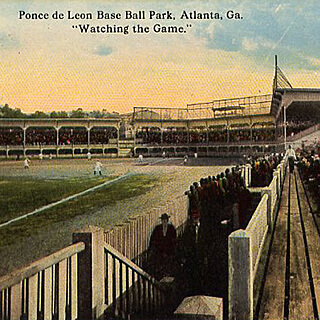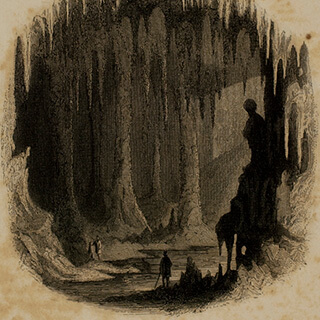Overview
Brett Gadsden reviews Andrew W. Kahrl's The Land Was Ours: African American Beaches from Jim Crow to the Sunbelt South (Cambridge, MA: Harvard University Press, 2012).
Review
 |
Building on a rich literature that explores the spatial dimensions of US race relations and capital formation, Andrew Kahrl's The Land Was Ours traces the histories of African American beach communities and leisure culture from the late-nineteenth to the late-twentieth centuries. Kahrl sets his narrative against the growth of "coastal capitalism," an economic system "characterized by the commoditization of the beach as a commercial asset, exploitation of natural resources and environmental engineering of coastal zones and bodies of water for aesthetic and recreational purposes, and the transfer of public lands to private entities" (4). The Land Was Ours artfully captures the complexities of black community formation as African Americans sought to tame and commercialize the natural coastal environment and negotiated complex and changing structures of racial discrimination, segregation, and exclusion in the Jim Crow and Sun Belt souths.
The Land Was Ours explores the inner workings of black communities and the complex relationships between blacks and the land along waterfronts that range from the Potomac Flats in Washington, DC, through the Chesapeake Bay and Hampton Roads, down the Carolina coast, and across the Gulf of Mexico from Mississippi to New Orleans. Blacks regarded these communities as vital sites of leisure, relief from wage labor, business opportunities, and—even if too temporarily and inadequately—corners of respite from the indignities of Jim Crow.
 |
| Pavilion scene, Carr's Beach, Maryland, July, 1956. Used with permission from WANN Radio Station Records, Archives Center, National Museum of American History, Smithsonian Institution, AC0800-0000006. |
Kahrl traces the origins of African American excursion companies and riverside resorts that tapped into the stream of black leisure dollars along the Potomac River. These ventures offered many of the district's black residents an opportunity to don their finest clothes, picnic, and dance. Farther south, Methodist bishop Robert E. Jones established the nation's first noncommercial, religious resort for blacks under the auspices of the Gulfside-Chautauqua Association in Waveland, Mississippi. If ragtime, alcohol, gambling, and the occasional brawl enlivened outings elsewhere, the Gulfside Assembly was explicitly established as a destination that served to shield its residents from "the temptations of the city" (53). More elite African Americans established communities such as Highland Beach, just outside Annapolis, Maryland. These private, planned vacation communities served as an escape for Washington and Baltimore's brand of Jim Crow. They also served as exclusive private domains for the relatively well heeled that sought a municipally incorporated, self-governed, social world apart from whites and blacks of lower socioeconomic status. Further attesting to the diversity of the black waterfront, large crowds flocked to commercial beach resorts like Carr's and Sparrow's Beach to enjoy sunbathing, beauty contests, carnival attractions, and a steady stream of black musical acts.
African Americans who sought to take advantage of the leisure and business opportunities afforded by coastal capitalism were never beyond the reach of whites who were bent on extending segregation to these beaches and exploiting the natural and modified landscapes at the expense of blacks' economic interests. Here, Kahrl offers a wide-ranging critique of the white supremacist and predatory foundations of coastal capitalism, as expressed in explicitly racial terms and masked in ostensibly race-neutral development strategies, financial practices, and property laws. Many readers will be familiar with the types of popular and official resistance and racial terrorism that blacks endured as they labored to establish households and communities in rural and urban environments.1Leon Litwack, Trouble in Mind: Black Southerners in the Age of Jim Crow (New York: Vintage, 1999); Arnold Hirsch, Making of the Second Ghetto: Race and Housing in Chicago 1940–1960 (Chicago: University of Chicago Press, 1998); Mark Schultz, The Rural Face of White Supremacy: Beyond Jim Crow (Urbana: University of Illinois Press, 2007); Beryl Satter, Family Matters: Race, Real Estate, and the Exploitation of Black Urban America (New York: Metropolitan Books, 2009). On the coast, the establishment of Shell Island, in Wrightsville Beach, North Carolina, as a leisure destination for black professionals, sent local whites into a panic. Orange County, California officials conspired with private interest groups in an attempt to deny blacks physical access to the Pacific Beach Club, to condemn the property, and to convert the land into a public—i.e. white—beach. White arsonists went to work at the Kessler's Mill and Pine Crest Inn facilities in Roanoke, Virginia, and the Pacific Beach Club, when legal maneuvers proved insufficient.
 |
| Four young African American women standing before a convertible automobile, Carr's Beach, Maryland, ca. 1958. Used with permission from WANN Radio Station Records, Archives Center, National Museum of American History, Smithsonian Institution, AC0800-0000005. |
Racial segregation and exclusion indelibly marked the growth of coastal capitalism, "firmly linking white privilege to public services and infrastructure improvements" (128). African Americans, who had enjoyed relatively open access to the coast, were formally excluded from the beach after the Army Corps of Engineers cleared the mangroves and laid down the miles-long strip of white sand along the Mississippi Gulf Coast. Banned from choice and safe recreation sites, black swimmers were relegated to dangerously polluted waters and dangerous currents in cities such as Charleston, New Orleans, and DC. Drownings became tragically commonplace in these dangerous waters. In exploring the roots of blacks' investment in the land, Kahrl also highlights the centrality of communal notions of land ownership that undergirded the acquisition of coastal property throughout the late-nineteenth and early-twentieth centuries. Against the backdrop of the Sun Belt boom, he then demonstrates how white developers took advantage of intra-family disputes and economically vulnerable stakeholders to obtain shares in black properties and wrest control and ownership from black families, reversing many of the historical gains made in the previous half century.
Blacks faced violence and recriminations for real or imagined transgressions of laws and customs that undergirded white supremacy.2Ida B. Wells and Jacqueline Jones Royster, Southern Horrors and Other Writings: The Anti-Lynching Campaign of Ida. B. Wells, 1892–1900 (Boston: Bedford/St. Martin's, 1996); W. Fitzhugh Brundage, Lynching in the New South: Georgia and Virginia, 1880–1940 (Urbana: University of Illinois, 1993). Kahrl points to a complementary problem—his subjects largely accommodated themselves to racial segregation and embraced many white Americans' attitudes about coastal capitalism, even as they were subject to its "most pernicious and exploitative extremes" (16). Here, The Land Was Ours gestures towards African Americans' historic lack of access to state power that made coastal capitalism possible in the first place—a dilemma that undergirds blacks' chronic vulnerability to terror, discriminatory private policies, and predatory financial practices, and one that needs to be understood as a central problem to studies of capital formation and race relations in US political development. 
About the Author
Brett Gadsden is an associate professor of African American Studies at Emory University where he specializes in African American history and civil rights. He is the author of Between North and South: Delaware, Desegregation, and the Myth of American Sectionalism (Philadelphia: University of Pennsylvania Press, 2012). Gadsden is currently at work on a project that explores the set of historical circumstances that brought African Americans into key cabinet, sub-cabinet, and other important positions in the Kennedy, Johnson, and Nixon administrations.
Recommended Resources
Text
Elkind, Sarah, Colin Fisher, Cassanda Johnson-Gaither, Jacob Darwin Hamblin, Andrew Kahrl, and Christopher J. Manganiello. "Roundtable on The Land Was Ours." H-Net Environment Roundtable Reviews 3, no. 5 (2013). http://www.h-net.org/~environ/roundtables/env-roundtable-3-6.pdf.
Simon, Bryant. Boardwalk of Dreams: Atlantic City and the Fate of Urban America. New York: Oxford University Press, 2004.
Wiltse, Jeff. Contested Waters: A Social History of Swimming Pools in America. Chapel Hill: University of North Carolina Press, 2007.
Wolcott, Victoria W. Race, Riots, and Roller Coasters: The Struggle Over Segregated Recreation in America. Philadelphia: University of Pennsylvania Press, 2012.
Video
Kahrl, Andrew. "The Sunbelt's Sandy Foundation: Coastal Development and the Making of the Modern South." Filmed April 11, 2013. Center for the Study of the American South Vimeo channel, 39:30. Posted July 9, 2013. http://vimeo.com/69966255.
Similar Publications
| 1. | Leon Litwack, Trouble in Mind: Black Southerners in the Age of Jim Crow (New York: Vintage, 1999); Arnold Hirsch, Making of the Second Ghetto: Race and Housing in Chicago 1940–1960 (Chicago: University of Chicago Press, 1998); Mark Schultz, The Rural Face of White Supremacy: Beyond Jim Crow (Urbana: University of Illinois Press, 2007); Beryl Satter, Family Matters: Race, Real Estate, and the Exploitation of Black Urban America (New York: Metropolitan Books, 2009). |
|---|---|
| 2. | Ida B. Wells and Jacqueline Jones Royster, Southern Horrors and Other Writings: The Anti-Lynching Campaign of Ida. B. Wells, 1892–1900 (Boston: Bedford/St. Martin's, 1996); W. Fitzhugh Brundage, Lynching in the New South: Georgia and Virginia, 1880–1940 (Urbana: University of Illinois, 1993). |


